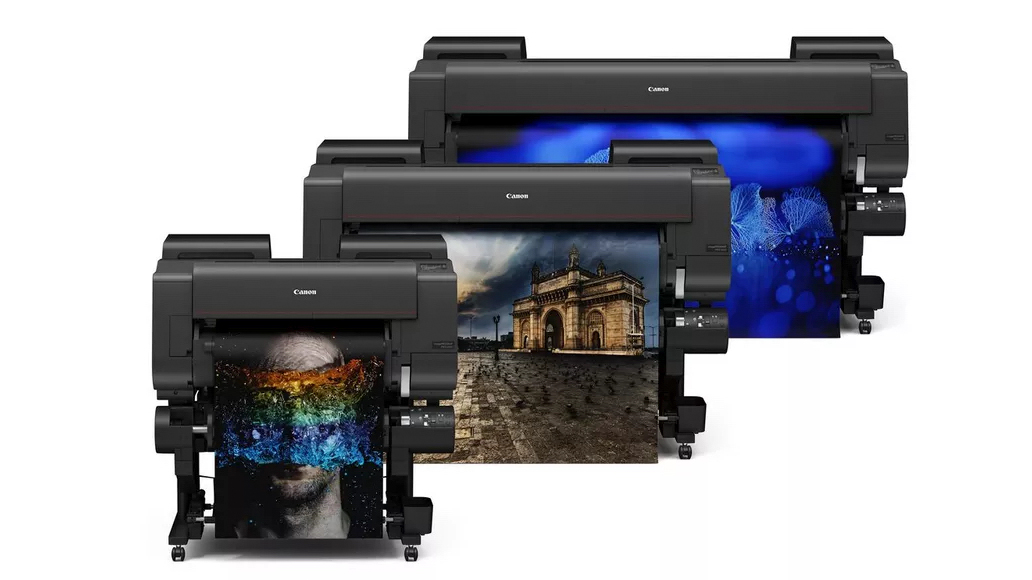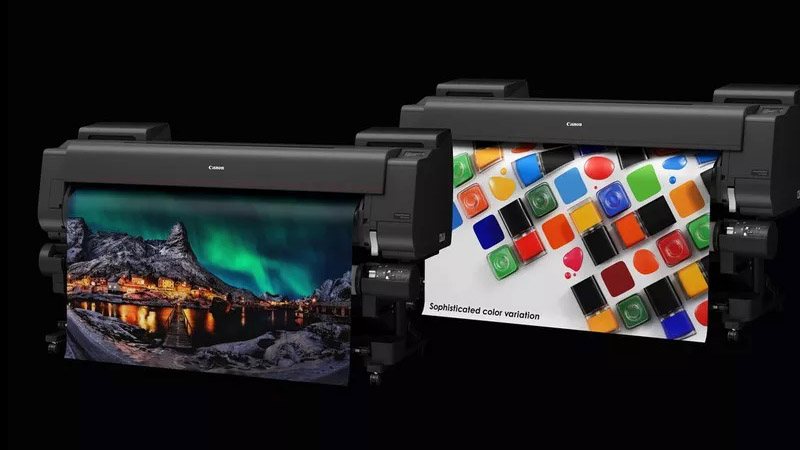Canon's new monster printers offer large-format prints that will last 200 years
200-year color guarantee sees new ink pigment brings new life into 60, 40, 24-inch large format printers

Forget about Letter-sized prints or even A3 blow-ups - Canon's latest large format inkjet printers offer huge, huge prints that can be up to 60 inches wide. Aimed at professional photographers who sell their prints, the trio of new printers offer a new ink formulation, that will see your prints outlive you, your children and your children's children - with an incredible 200-year longevity.
The new additions are additions to Canon's highly successful imagePROGRAF Pro large format printers - a 60in (imagePROGRAF PRO-6600), 44in (PRO-4600), and finally a 24in (PRO-2600). These three new models will replace the imagePROGRAF PRO-6100, PRO-4100, and PRO-2100 respectively. Each offers a new 12-color pigment ink set (Lucia Pro II) to produce the highest quality prints available from any imagePROGRAF offered by Canon.

Launching this new series of large format printers addresses market demand for greater image durability and light resistance to help increase long-term print storage and offers new environmental benefits over previous models.
The new Lucia Pro II ink set also allows users to futureproof their print output as the new inks provide substantially improved scratch resistance on photographic papers, to make handling, mounting, and finishing easier, such as for fine art printers (PSPs). In contrast, a very light-resistant pigment in the ink set dramatically increases color fastness . This in theory enhances their value, as photographic and fine art prints can now be produced in even higher quality with the new series of large format printers and be preserved for up to 200 years without the colors fading.

This new series also focuses on environmental considerations, for instance, complying with Canon’s goal of reducing the environmental footprint of its products and operations by using resources responsibly, minimizing waste, increasing efficiency, and supporting innovation.
To co-inside with those goals Canon has reduced the amount of expanded polystyrene packaging material used with the new imagePrograf Pro series – for example, the company says it uses 89.5% less polystyrene foam for the PRO-4600 than for its predecessor. In addition, its reduced power consumption – using 85W or less during operation and 2.3W or less during standby.
“We’ve raised the bar for print quality as well as significantly increasing image robustness in terms of light and abrasion resistance, which is crucial for fine art printers and professional photographers", comments Canon Europe's Mathew Faulkner.
Get the Digital Camera World Newsletter
The best camera deals, reviews, product advice, and unmissable photography news, direct to your inbox!
The new imagePrograf Pro series will be available from March 2024 either directly from Canon or through one of its accredited resellers.

For nearly two decades Sebastian's work has been published internationally. Originally specializing in Equestrianism, his visuals have been used by the leading names in the equestrian industry such as The Fédération Equestre Internationale (FEI), The Jockey Club, Horse & Hound, and many more for various advertising campaigns, books, and pre/post-event highlights.
He is a Fellow of the Royal Society of Arts, holds a Foundation Degree in Equitation Science, and holds a Master of Arts in Publishing. He is a member of Nikon NPS and has been a Nikon user since his film days using a Nikon F5. He saw the digital transition with Nikon's D series cameras and is still, to this day, the youngest member to be elected into BEWA, the British Equestrian Writers' Association.
He is familiar with and shows great interest in 35mm, medium, and large-format photography, using products by Leica, Phase One, Hasselblad, Alpa, and Sinar. Sebastian has also used many cinema cameras from Sony, RED, ARRI, and everything in between. He now spends his spare time using his trusted Leica M-E or Leica M2, shooting Street/Documentary photography as he sees it, usually in Black and White.
